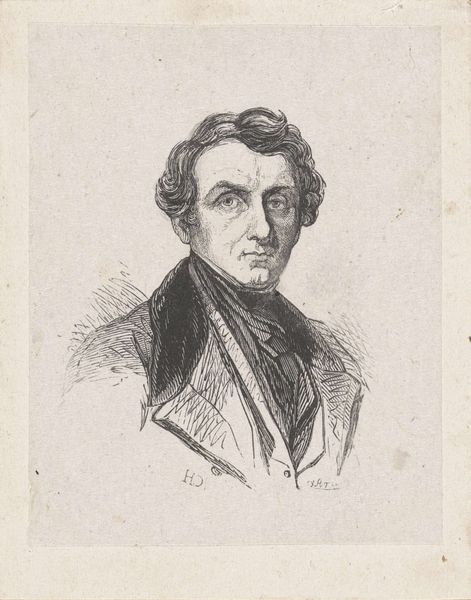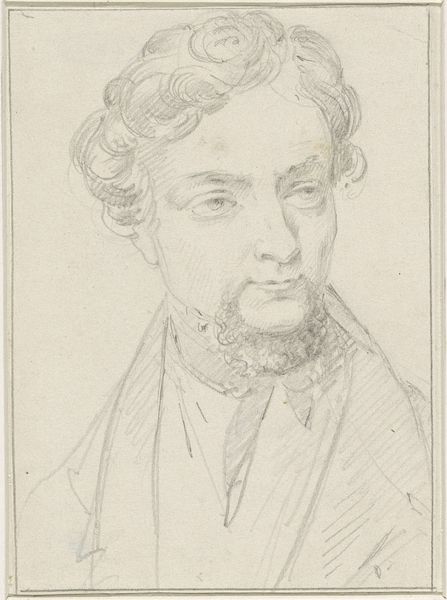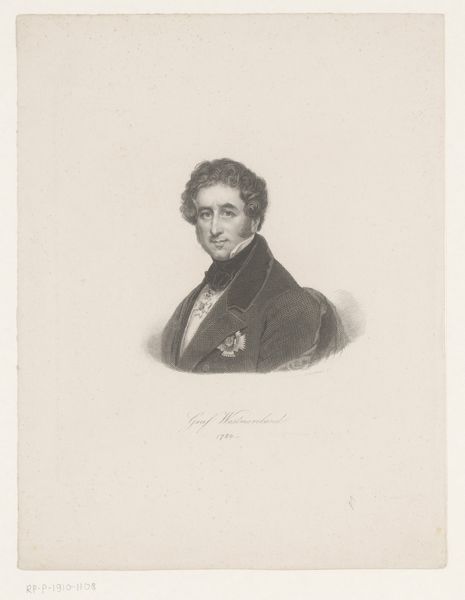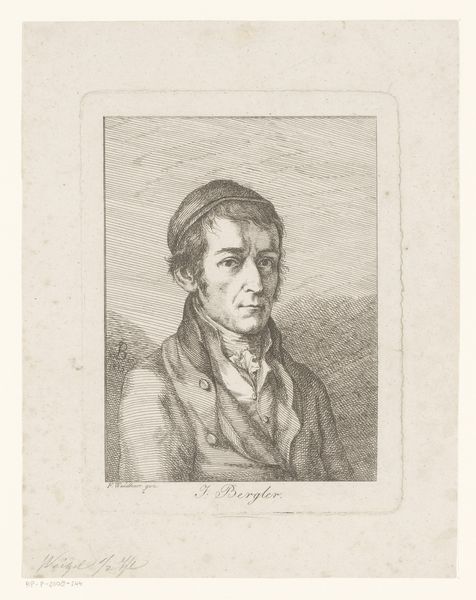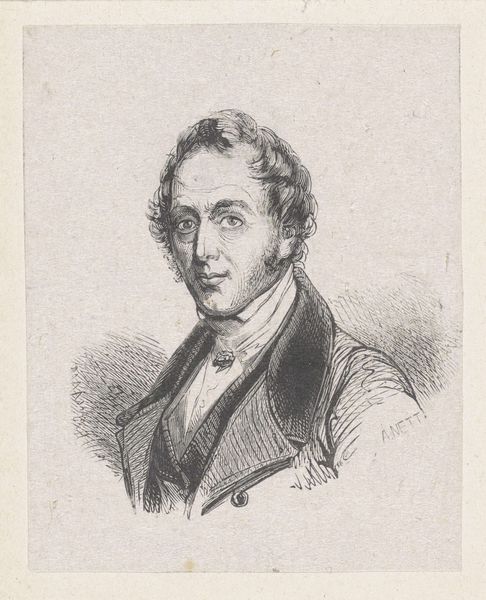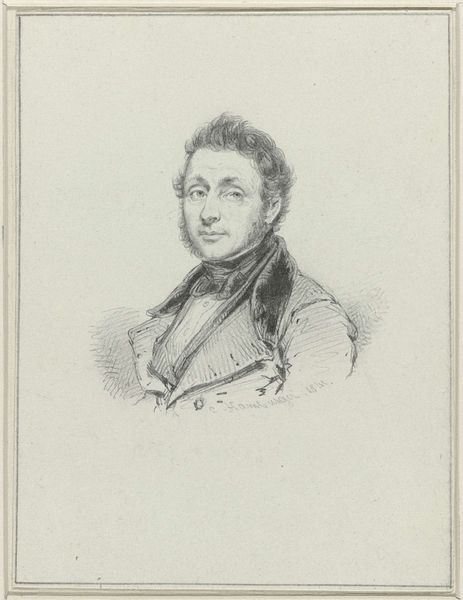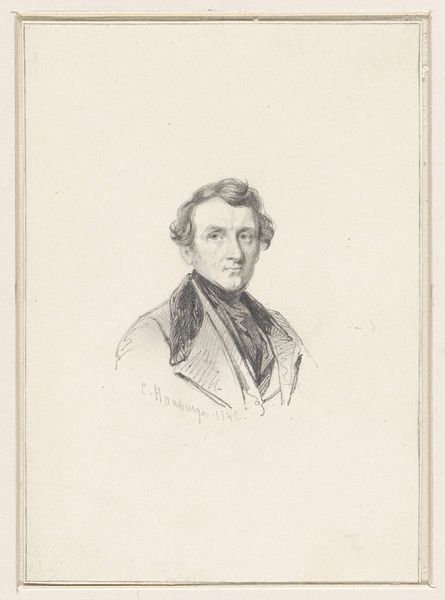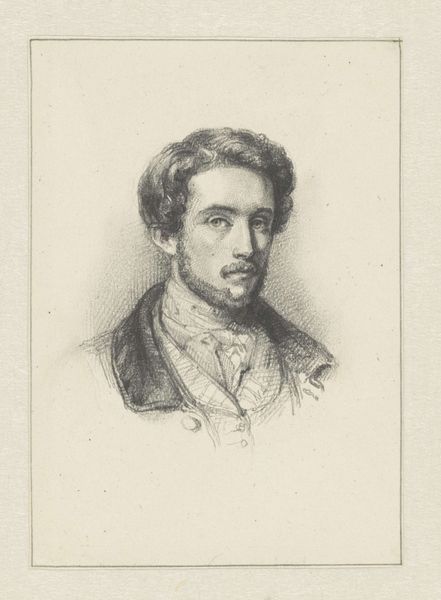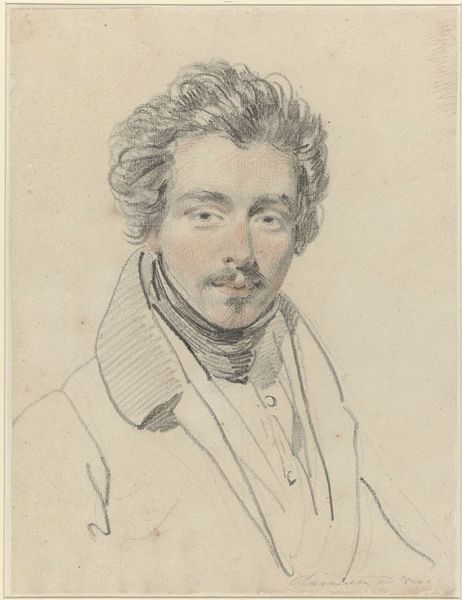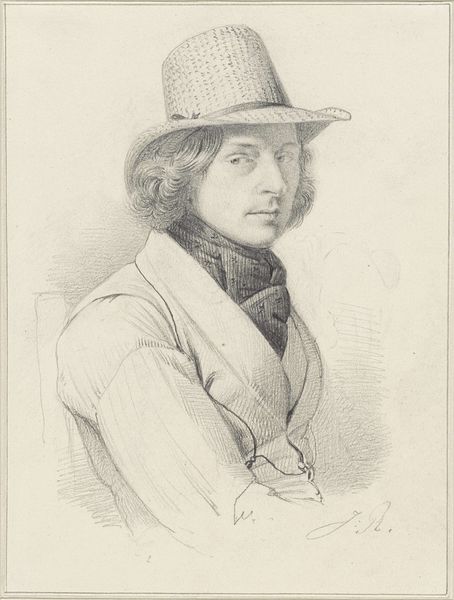
drawing, dry-media, pencil
#
portrait
#
pencil drawn
#
drawing
#
self-portrait
#
dry-media
#
pencil drawing
#
pencil
#
portrait drawing
Dimensions: height 117 mm, width 85 mm
Copyright: Rijks Museum: Open Domain
Editor: This is "Self-Portrait" by Augustus van der Steene, made sometime between 1813 and 1870. It's a pencil drawing, and there's something almost ghostly about it with all the delicate lines. What do you make of it? Curator: As a materialist, I am drawn to the socio-economic context that facilitated its creation. Consider the production and distribution of pencils during this period. The rise of graphite mining and manufacturing transformed drawing from a rare skill to a relatively accessible activity. How did that democratisation affect artistic practice? Editor: So, because the pencil was becoming more accessible, more people were making art? Curator: Precisely. The means of production – the availability of this relatively inexpensive medium – directly impacted who could create, and what kind of art was possible. Think about the labour involved: from the miners extracting the graphite to the pencil makers shaping the wood, the piece speaks to the network of workers contributing to its existence. We often celebrate individual genius, but we forget the conditions that make art possible. How do you think that understanding changes our viewing experience? Editor: I guess I usually just think about the artist's skill. But knowing how many other people were involved makes me think about art as less of a singular vision. It's more of a collaborative product of its time. Curator: Indeed. The pencil, a tool of expanding literacy and commerce, allows us to consider drawing not just as artistic expression, but as a product of industrial progress. And, thinking about the 'self' in the portrait, isn’t identity also formed in relation to broader social and material forces? Editor: That's a totally different way of seeing a self-portrait than I'm used to. Curator: It allows us to reflect on the intertwined relationship between art, industry and social change. Editor: That's definitely given me a lot to think about when I look at other art.
Comments
No comments
Be the first to comment and join the conversation on the ultimate creative platform.

